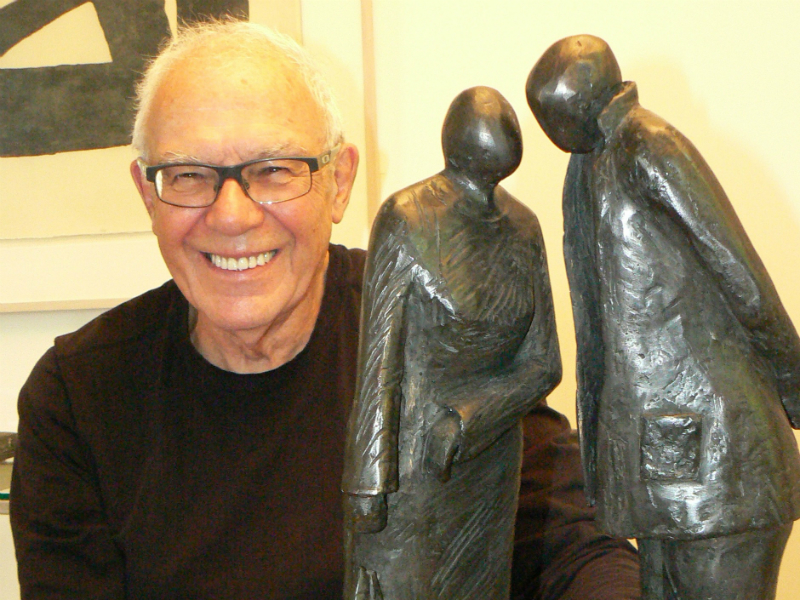Claude Hazanavicius works with wax, but his sculptures, which are later cast in bronze, are so soulful that they may as well be made of flesh and blood.
The artist encapsulates the human condition in a piece called Couple Dialoguing, in which a man and woman walk together, her hand not quite reaching his, while the two of them speak on their cellphones.
Lack of communication also characterizes In the Metro, in which two strangers hold onto the same pole, facing each other across an unbridgeable gap. Looking Up features a pair of figures scanning the skies, or perhaps an urban skyscraper, both riveted by what they see, yet unaware of one another.
Loneliness in the Internet age is just one of Hazanavicius’ compelling subjects. His most poignant pieces have roots in his own experiences as a child, during and after the Second World War.
Born in 1939 in Sancerre, France, to a Lithuanian father and Polish mother who were separated by the war for six years, he endured a difficult childhood.
Though his surname means “son of a cantor,” his Jewish education lapsed under the conditions of fear and conflict that were endemic in his home town.
It was then that he began sculpting, using such materials as blackboard chalk and malleable wax scavenged from cheese wheels, to carve tiny figures.
One bronze made he in adulthood recalls his years of deprivation. It depicts him and his older brother standing on a sidewalk, scanning the gutter for lost food ration tickets.
The Algerian war, in which he fought, triggered a memory of fleeing civilians that translated into a sculpture of four figures that gradually reduce in size, as they follow one another, shoulders hunched with the weight of their suffering, over a large shard of slate that acts as the sculpture’s base.
READ: TEMPLE SINGER’S ALBUM AVAILABLE FOR FREE
Hazanavicius enrolled in an electronics program that led to a job in French television, then a move to Montreal in 1967 to work at the National Film Board of Canada (NFB), which he says was “a dream job in the best centre for documentary cinematography.”
In 1996, while working on an NFB documentary dealing, in part, with craftsmanship in Senegal, he saw a bronzier at work.
“I said, ‘That’s what I want to do,’ “ he recalls. He thus added art-making to his busy freelance schedule in the film industry. (As an audio engineer, Hazanavicius worked on such films as Mon Oncle Antoine, X13 and The Trotsky.)
He has associated himself with four galleries over the years, the first being the now defunct Clair Obscur, followed by the Odon Wagner Gallery in Toronto. He is currently represented by Galerie d’art la Corniche in Chicoutimi, Que., and the Klinkhoff Gallery, which hosts images of his works on its website, as well as a link to Carl Michael Atiyeh’s seven-minute film, Claude Hazanavicius: Bronze Sculptor, Passionate. In it, Hazanavicius can be seen wielding his sculpting tools, most of which are unorthodox.
“Anything can fit your purpose – a fork, a palette knife, a hair dryer to melt the wax a bit – and I don’t like my sculptures to be smooth, or with a shiny patina,” says Hazanavicius, whose spontaneity needs no drawings or studies. He works from emotion in his studio, which is located in the RCA Building.
Commissions have come his way in the form of a bust of the founder of the Mount Sinai Hospital Centre in Montreal and a summery but pensive woman for a Nuns’ Island patron. His next show, a major retrospective, is slated for September 2019.
